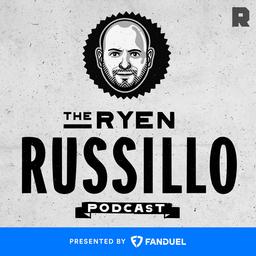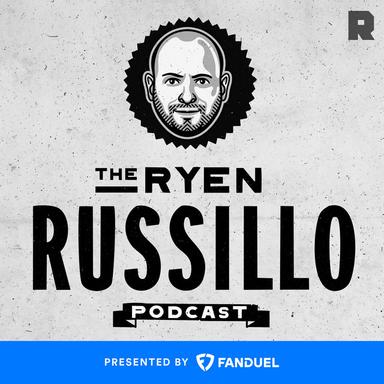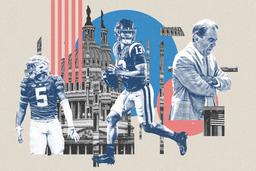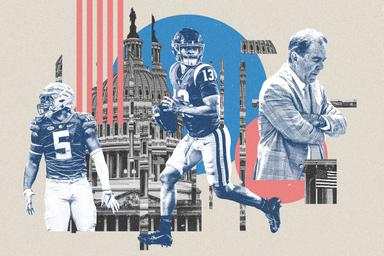Why the College Football Transfer Portal Has Sparked an Existential Crisis
The history of college football is filled with people panicking that the sport they love is changing. Then, they get over it. But the outcry over the transfer portal—and other realities of the NIL era—is different.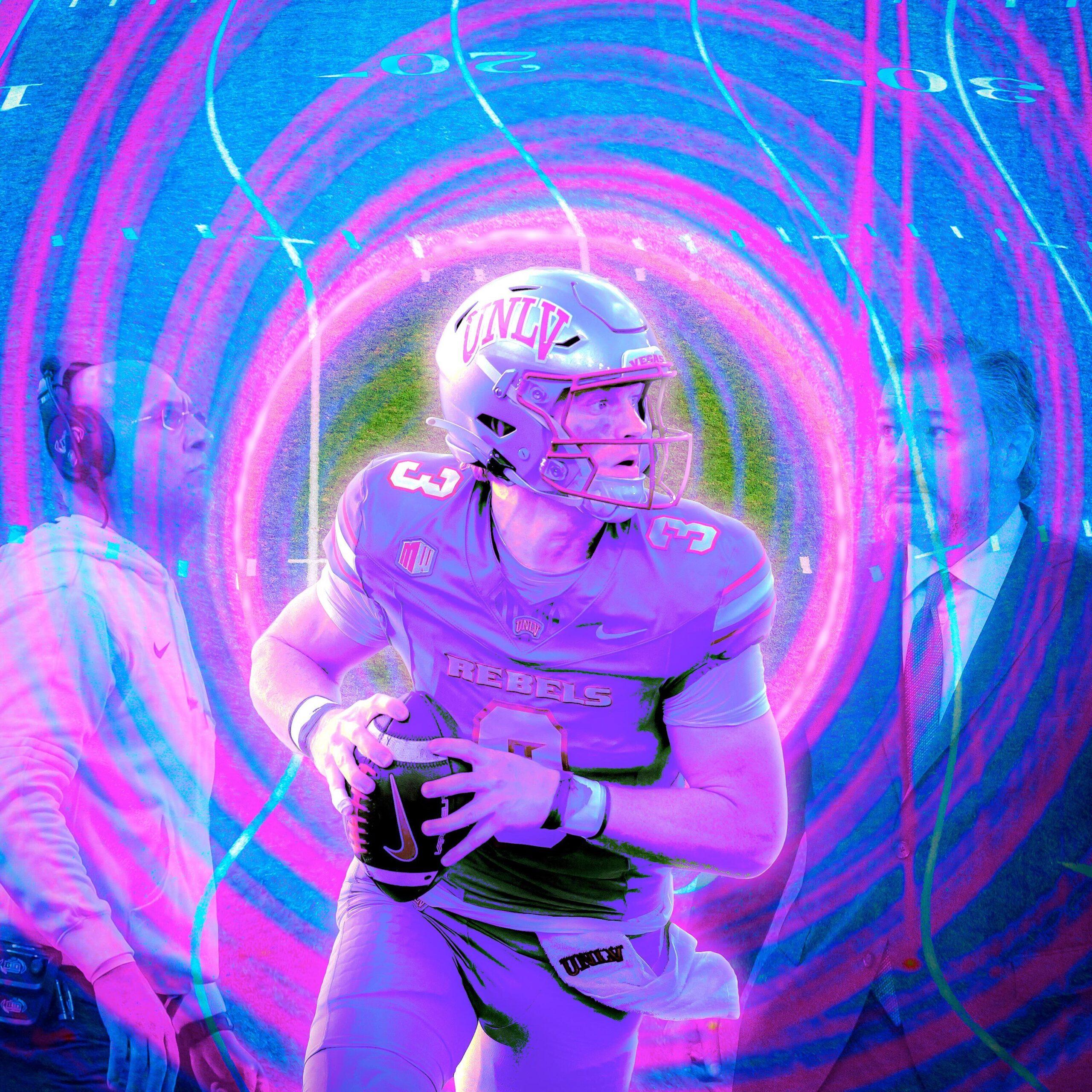
The defining moment of this college football season may have happened during the final weekend of September. It wasn’t when then-fourth-ranked Alabama hosted second-ranked Georgia in one of the most anticipated matchups of the year. Instead, it was a stunning development that unfolded at UNLV. With the Rebels sitting at 3-0 and poised to enter the AP poll for the first time in program history, senior quarterback Matthew Sluka announced that he would not play any more games for the team in 2024. The reason? Sluka said that UNLV never paid him the $100,000 the school reportedly promised him in a name, image, and likeness deal.
This news consumed the sport, with questions about Sluka’s story quickly spreading. What promises were made? Why weren’t they put in writing? And what did Sluka’s decision to leave his teammates to preserve a year of eligibility say about the state of college sports in the NIL era?
On ESPN that week, Pat McAfee said that the NCAA needed to “figure this shit out.” On College GameDay, host Rece Davis said of Sluka: “Going in there and expecting something without writing, and then they don’t give it to you, you can’t just bail on the team.” Kirk Herbstreit went a step further, arguing that the power balance had shifted too far in the players’ favor. “We’re all for the players getting paid, but we’re not all for the players having all the control,” Herbstreit said. “We went from one extreme, where the players didn’t have a lot of control, to now the players having all the control.”
One player’s decision had seemingly sparked a sportwide existential crisis. And then, the damnedest thing happened: More players followed suit.
USC and Alabama lost important defensive tackles who had slipped on the depth chart. Louisville lost one of its best receivers. In the past week alone, Marshall withdrew from a bowl game because more than 30 of its players entered the transfer portal, and Penn State lost its backup quarterback on the eve of the College Football Playoff—the second straight year that the timing of the transfer portal has led to such a departure for a playoff team. “I’m concerned for college football right now in general, to be honest with you,” Penn State head coach James Franklin told reporters, “and I think a lot of people are.”
Some of this hand-wringing is understandable. Some of it could lead to reform that changes the sport for the better. And some of it taps into a fear that the powers that be in this universe have forever held. It was one thing for college football players to start earning a bit of money. It’s another for those players to have power, and for them to exercise it.
The history of college football is mostly a history of people expressing concern that the sport they love is changing beyond recognition. The agent of change has varied over the years. What has not is the propensity of those in power to eventually accept the new reality and move forward.
Take integration. Ole Miss more or less staged an epilogue Civil War battle to stop it in 1962, with Mississippi’s segregationist governor giving a speech at a football game to rile up opposition. Not a decade later, however, the Rebels became the last team in the SEC to roster Black players.
Or take Title IX. Longtime Texas coach Darrell Royal was one of many in his profession who thought these rules would financially wreck college football, and he even helped draft the Tower Amendment in an attempt to exempt revenue-generating sports from complying. The sport was, of course, not financially devastated by Title IX, and it has emerged as a billion-dollar industry that’s more profitable than ever.
Televised games? The NCAA initially argued that people would stop going to live contests if they could watch from home. Conference realignment? What was once widely seen as a threat to the sanctity of college sports has only hastened over the past 15 years. Hurry-up, no-huddle offenses? No less than Nick Saban asked skeptically of them, “Is this what we want football to be?” Most recently, college football expanded from a four-team playoff to a 12-team field barely a decade after abandoning the BCS. Cries that this would ruin the regular season have dissipated now that the first 12-team event is set to begin, and the 2024 regular season sure did seem like fun.
Player compensation is, or at least was, the sport’s most enduring bogeyman. The NCAA argued in many federal courts that fan support for college athletics was directly tied to the players’ status as amateurs. In a 2021 brief to the Supreme Court, the association’s lawyers tried to lay out the market benefit of college football players going unpaid. “The cost of labor in this unique instance is what is the differentiating feature that provides a pro-competitive product,” an NCAA lawyer said during oral arguments.
The NCAA lost that case 9-0, the second in a pair of antitrust decisions that eliminated various amateurism restrictions. And as those cases were working their way through the courts, legislators in various states were working on bills to outlaw the NCAA’s ban on third parties paying players. With virtually no other choice, the NCAA dropped its long-standing rule against NIL payments in July 2021. Collectives to organize payments to players sprang up in huge numbers between 2022 and 2023, and the college sports economy has changed dramatically since.
The association’s amateurism argument—the central tenet of its operating model as college sports grew from a small business into a colossal one—no longer held up in real court or the court of public opinion. Now, few people even attempt to peddle it. The current establishment line is similar to what Herbstreit said after Slukagate: It’s fine for college athletes to make money, but they now have too much power to run the show.
On the one hand, it should surprise nobody that a sport as historically messy as college football has settled on a ramshackle system of player payments. On the other hand, the chaos of the system has afforded athletes more earning power and agency than ever before. There is no name, image, and likeness salary cap. Collectives have sought contractual language to prevent players from welching on agreements, but any recourse is limited. That the transfer portal opens for business in December, smack-dab in the middle of the postseason, has caused further consternation among aggrieved coaches and administrators.
The context for that aggrievement bears repeating: This method of doing business is primarily in place because the schools, under the NCAA umbrella, have been unwilling to pay athletes throughout the more than 150-year history of college sports. Claiming that players now have all of the control is silly, but they can indeed throw their weight around like never before. And because the job of paying players has largely fallen to fans donating to third-party shell organizations, there hasn’t been much that the coaches and athletic departments can do when a player sees greener grass elsewhere.
At issue is the relationship between money and control. The money isn’t the problem, but the power is. Can players have one without the other?
The NCAA’s fundamental argument is that they can. The NCAA and its schools have pushed for years for a federal law to regulate the relationship between schools and athletes, most notably by stipulating that no athletes are employees and that the NCAA has an antitrust exemption to regulate player compensation. The NCAA is seeking this white-glove treatment not because its priority is making roster management less chaotic, but because it wants to make fielding teams less expensive. Schools want to pay players on their terms, with a federal blessing. They want to reestablish control.
The NCAA’s chances of getting what it wants have gone up considerably following the 2024 presidential and congressional elections. Few people filled out their ballots this year with an eye toward what the outcome would mean for college sports, but the effect on the industry will be significant. Texas senator Ted Cruz will become chair of the chamber’s committee for commerce, and he has loudly (and, in one respect, misguidedly) opposed efforts to make college athletes employees. Cruz has shown up at bunches of games and hosted football power brokers in his Capitol Hill office, eager to make himself into a mover and shaker in the future of college sports.
So, too, has Alabama senator Tommy Tuberville, as the former Ole Miss, Auburn, Texas Tech, and Cincinnati head coach sees red meat in his old profession. He wants legislation that penalizes players for breaking NIL contracts, which raises a question: Aren’t there already consequences for breach of contract? What’s so exceptional about college athletes? Elsewhere in Washington, the National Labor Relations Board, which has recently been quite friendly to college athletes’ rights, will soon turn over.
Meanwhile, a major case settlement looms. A pact between the NCAA and a group of former athletes in House v. NCAA is winding through an approval process. Nothing is guaranteed, but the industry is preparing for a federal judge to sign off in April on an agreement that would both lead to schools paying players directly for the first time ever and install a de facto player salary cap for the whole athletic department. That cap is slated to be $20.5 million in 2025. This agreement, which received preliminary approval from a judge in October, would leave unsettled the oft-debated (and now litigated) employee question. The schools would trade dollars in the short term for control in the long term.
Collectives would still exist, and nothing in the still-pending House settlement would stop those or overzealous coaches from potentially operating in a sleazy fashion. But if this comes to pass, that would happen mainly on the margins. Without naming Sluka directly, after the story broke NCAA president Charlie Baker alluded to “dysfunction” in the current model that this settlement would alleviate.
This week is unlike any in college football history. The inaugural 12-team playoff is about to begin, and it will bring the first on-campus tournament games the top level of the sport has ever seen. That will be the dominant story line over the weekend, and then the thousands of scribes and talking heads who cover the sport will turn their focus back to what’s happening in the transfer portal. Sluka himself is making visits to a few schools, hoping that his third stop—he was a star at Holy Cross before his short stint at UNLV—will do more for him than his second.
Such a confluence of events would have seemed unthinkable in college football as recently as a few years ago. Yet just as it became the norm for players to be paid, this too will soon feel familiar. The sport’s evolution is a story about a critical mass of decision-makers banding together to oppose change and then quietly accepting it when gravity, financial or legal, takes hold. The expanded playoff and practically limitless transfer environment are both products of this dynamic.
Yet the Sluka affair and everything in the months since have made clear that there’s something this dynamic excludes. Progress can come in many forms, but it can’t affect who has the power to shape the competitive landscape of the sport. College football’s ruling class lost one fight, with players gaining collective deals, increased freedom to change schools, and soon a piece of the schools’ revenue pie. But they’re still winning a more fundamental fight—the one over who controls how change will happen in the future and who does not.
